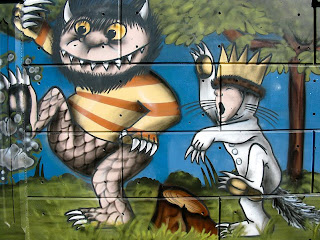Computer Graphics and Photorealistic Human Animation in Beowulf (2007)

I just got finished watching Beowulf (Robert Zemeckis, 2007). It's an interesting film. It's completely CG (made with computer graphics), like Toy Story, but features (attempts at) photorealistic humans, like Final Fantasy: The Spirits Within. Unlike Final Fantasy, however, it attempts to model actual actors. That is, Malkovich, Hopkins, and Jolie are clearly recognizable in this film.
Zemeckis could have filmed live actors and enhanced it with CG, but decided not to. Ultimately, this was a mistake. The characters still don't quite look real enough to pull this movie off in terms of acting.
Ultimately I enjoyed the film very much, but more for it's story and monsters and graphics. It's only the acting I'm critisizing. And I'm writing a second blog post on this basic topic because ultimately all films will be completely CG. I will argue for this at the end of this post.
I have written previously on Jim's Law of Animation, which states that a film should only involve animation if it has some aspect of the otherworldly. This film qualifies, in that it has big monsters in it.
However, in part because of the uncanny valley, which I have also blogged about, the technology is still not quite ready for photorealistic acting. We saw the problem in Final Fantasy, and even in the first short of The Animatrix. Although Beowulf is getting closer, it's still not quite there. But mark my words, in the lifetime of most readers of this blog, it will be.
Let's distinguish the graphics from the animation for a moment, where the graphics refers to how good each frame of the film looks, and the animation to the apparent motion in the film. The graphics of this film are great. Oftentimes I honestly would not have been able to tell if I were looking at a real or CG person. The animation is the problem, the last step. And what I like about it is it's as much an AI problem as a graphic problem. It's the human mind and brain that controls the muscles of the face to generate facial expression, which is the core of the acting problem.
I appreciate the film as an attempt, an experiment. But it's a drama, and drama requires a belivability in the acting that photorealistic CG humans are not up for. Yet.
What about The Incredibles, you might ask. That was a great film! Yes, it was, but as explained in my uncanny valley post, Pixar deliberately does not render photorealistic humans precisely because we expect too much out of their acting. Also, I think it's important to note that The Incredibles was a comedy, which requires subtley, but more in the timing than in the genuine expression of emotion category.
That said, the film is engaging and well-directed. I particularly appreciated the silences. It's common for movies like this to be over-scored with sweeping music.
You can watch the trailer here and see if you agree with me:
Okay, so what is this business about all future films being completely CG? Before I answer, I will add a caveat: In the future, films with actual actors in them will be slightly more common than traditional cell animation is today.
The reason is cost and flexibility. Basically, when we can have CG actors that are indistinguishable from actual human beings, both in still appearance as well as acting, then it will be more cost-effective to use CG actors. It's as simple as that. Movie stars, or flesh-and-blood living ones, anyway, will cease to have a profession. They can all try to go audition for the theater.
If this sounds far-fetched, reflect on the incredible progress CG has made over the course of my (and probably your) lifetime. At some point in my childhood, the best CG was a game called "Pong." (you can play pong at http://www.csit.carleton.ca/~arya/games/pong.html)
Later came Pac-Man, Pixar films, the Titanic movie, and now Beowulf. This has all been in the span of about 20 years. You can't tell me that we won't be fooled by CG humans on screen with another 50 years of progress.

Comments